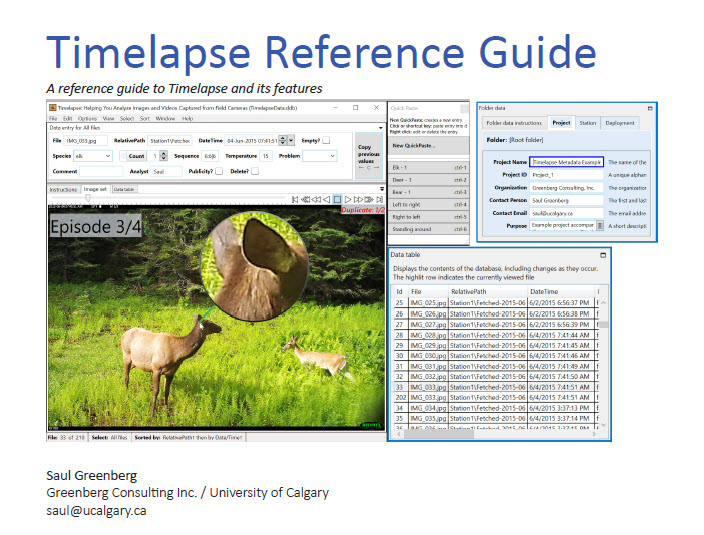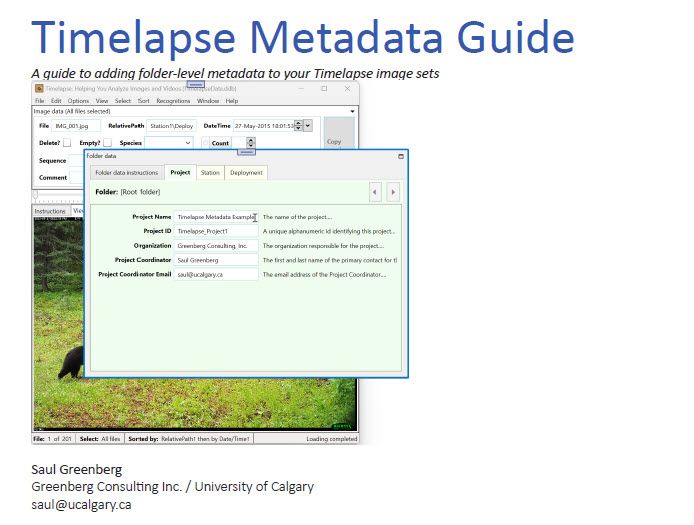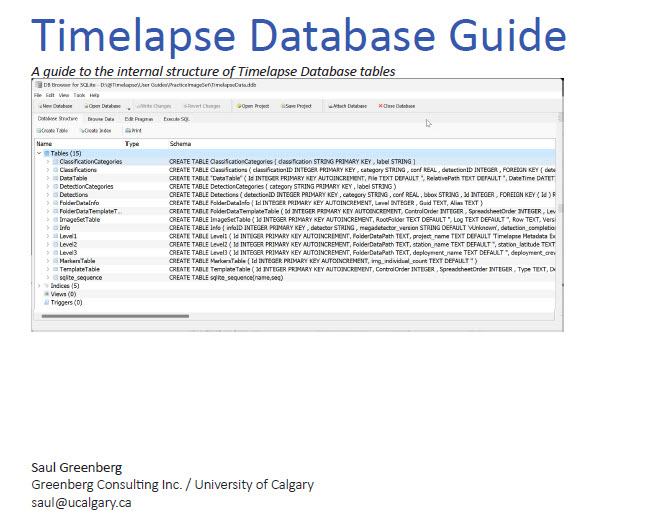Tutorial Guides
Don’t Panic!
The number of guides (some with video companions) may give you the impression that Timelapse is difficult to use. It isn’t. The Quick Start Guide is likely all you need to get going, where you can try it out on the Practice image set. Once you have tried Timelapse, you can then peruse the Reference Guide and the Template Guide for details, additional features and workflow tips.
Other guides touch upon optional advanced features. The Image Recognition Guide illustrates how to use and incorporate image recognition into your work flow, while the Metadata guide explains how to associate folder-level hierarchical metadata with your image data. The Database Guide is likely of interest to only a handful of people who want to access data held in the database directly rather than through exported CSV files.
The Videos lessons page supplement the guides. Each lesson provides a short introduction to a particular Timelapse function or concept.


